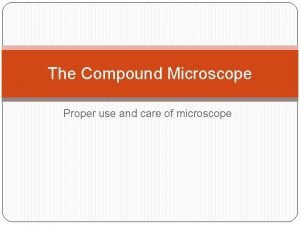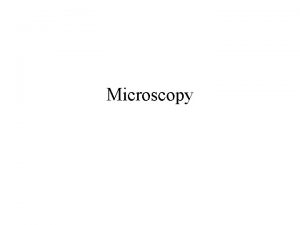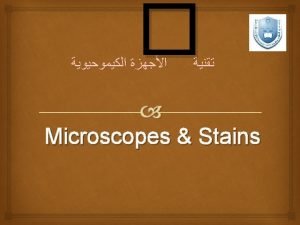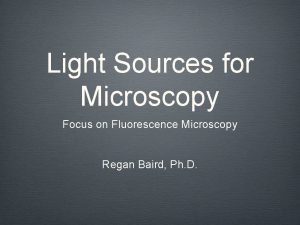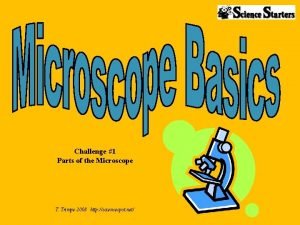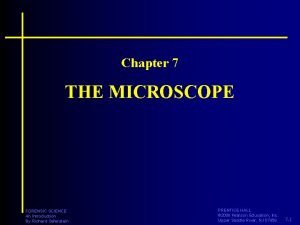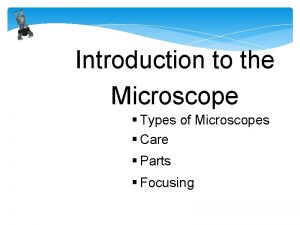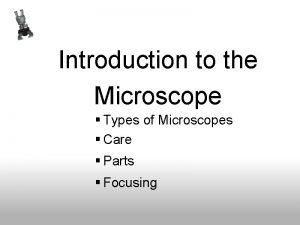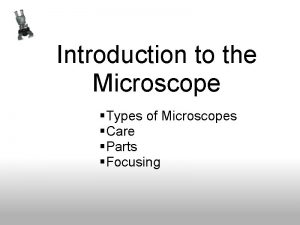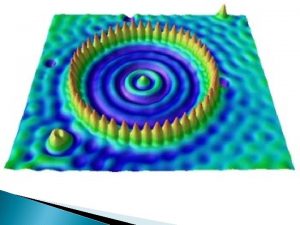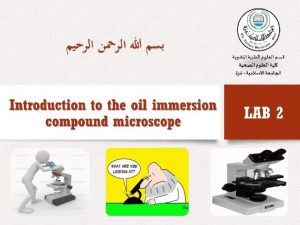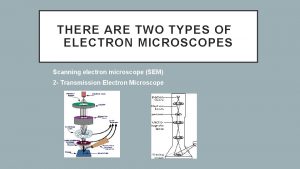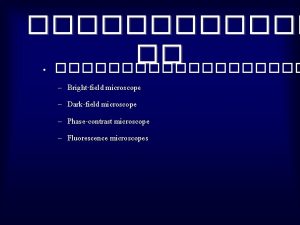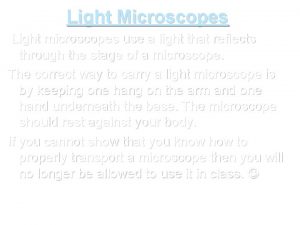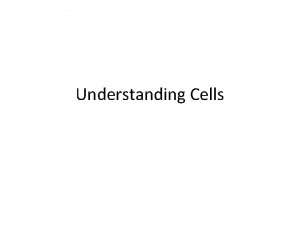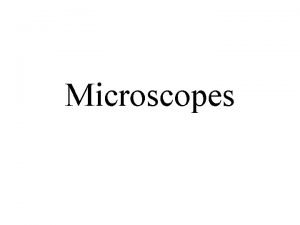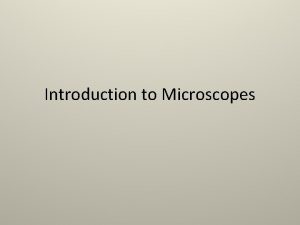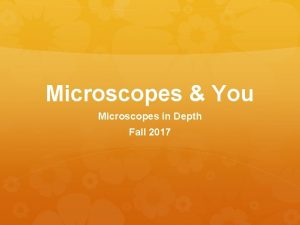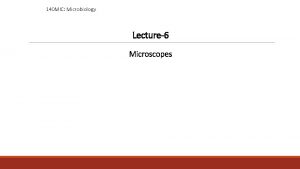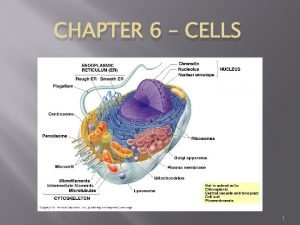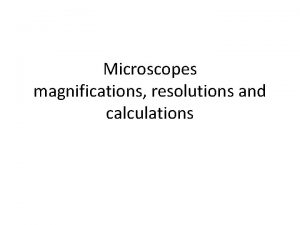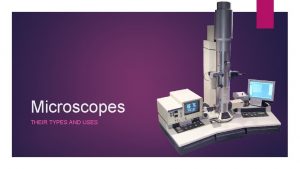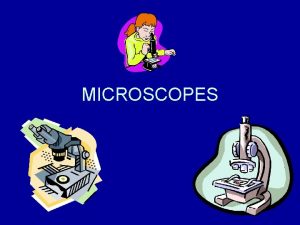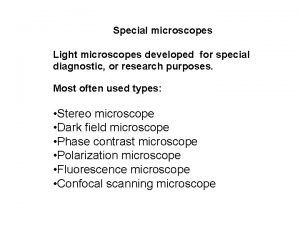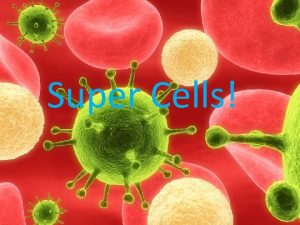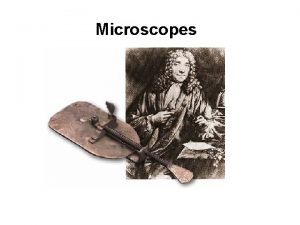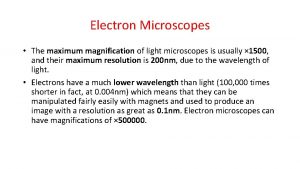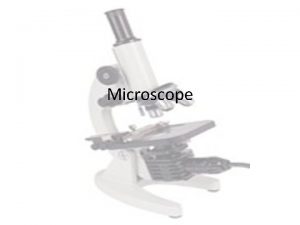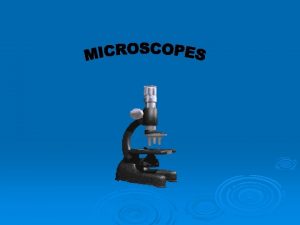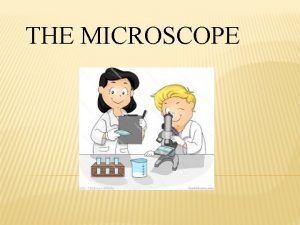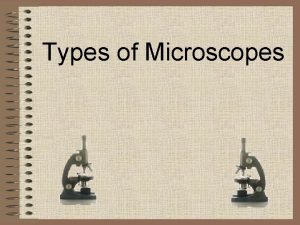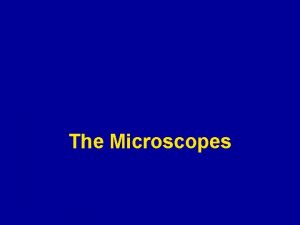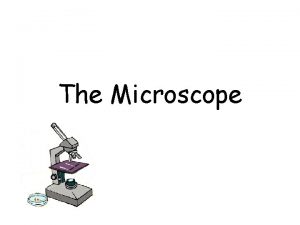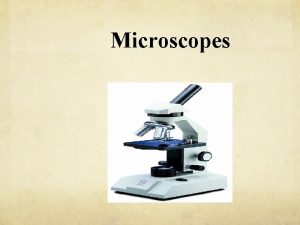Microscopes Light microscope Invert Microscope Fluorescence microscope uses























- Slides: 23

Microscopes

Light microscope ﻣیکﺮﻭﺳکﻮپ ﻣﻌکﻮﺱ Invert Microscope

Fluorescence microscope uses uv as a light source

Electron Microscopy: 1. Scanning Electron Microscopy(SEM)

Transmission Electron Microscope (T. E. M)


SEM TEM

Atomic Force Electron microscope (A. F. M) Cellvibrio japonicus (credit: J. Narrett)

Spectroscopy

perpendicular to each other Biophysics for Microbiology students Electromagnetic wave is composed of two perpendicular merged magnetic and electric waves E: electrical wave B: Magnetic wave Energy = h × f (h: Plank constant, F = C/ʎ f: frequency) (ʎ: Wave length, C: light rate: 3× 10^8 m) Energy = h. C/ ʎ ʎ , Energy & ʎ , Energy ʎ B


Energy kcal/mol ʎ nm 100, 000 1000 (microwave) , (Rotational transitions) 1 (Infrared), 10 (Visible) 100 10 (UV) (Vibrational transitions) electronic transitions, atom outer shell) (X-Rays) 1000 10, 000 1 “Each energy (ʎ) range Causes special transition and can provide a spectroscopy instrumentation”

Microwave Rotational Spectroscopy Since its inception in 1934, microwave rotational spectroscopy has provided some of the most accurate data for numerous small to medium sized molecules, including structural parameters, force field parameters, and electronic charge distributions. Analyses of the recorded rotational spectra can yield a number of spectroscopic parameters, depending on the molecular symmetry and the various angular momenta present, such as nuclear spins and electronic momenta.

UV-visible Spectroscopy Concentration effect on UV-visible spectrum UV-Visible spectrophotometer

UV-Visible spectrum of Chlorophyll a & b

IR Spectroscopy IR Spectrum Ft- IR Spectrum (1/ʎ)

Circular Dichroism (CD) Spectrophotometry (Circularly polarized light is needed for it)

Cd Spectrum can determine Protein second structure: alpha helix (red), beta sheet (green) and random coil (black)

CD Images

Nuclear Magnetic Resonance (NMR)

NMR spectrum


Mass spectroscopy: The best tool for determining trace of materials in samples
 Light microscope uses
Light microscope uses Compound microscope use
Compound microscope use Compound microscope
Compound microscope Light sources for fluorescence microscopy
Light sources for fluorescence microscopy Inverted subjects and verbs
Inverted subjects and verbs Vanessasannnnn
Vanessasannnnn Audacity invert
Audacity invert Invert a binary tree
Invert a binary tree Headlines types
Headlines types Finding inverse of matrix
Finding inverse of matrix Light light light chapter 23
Light light light chapter 23 Light light light chapter 22
Light light light chapter 22 Chapter 22
Chapter 22 Difference between light microscope and electron microscope
Difference between light microscope and electron microscope Microscope mania compound light microscope
Microscope mania compound light microscope Forensic science microscopes
Forensic science microscopes Types of microscopes
Types of microscopes When focusing a specimen, you should always start with the
When focusing a specimen, you should always start with the Organelle breaks down organelles that are no longer useful
Organelle breaks down organelles that are no longer useful When focusing a specimen you should always start with the
When focusing a specimen you should always start with the T. trimpe 2006 http //sciencespot.net/
T. trimpe 2006 http //sciencespot.net/ Electron microscopes main idea
Electron microscopes main idea Purpose of a microscope
Purpose of a microscope Types of electron microscopes
Types of electron microscopes
